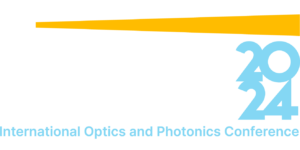SBFoton presents
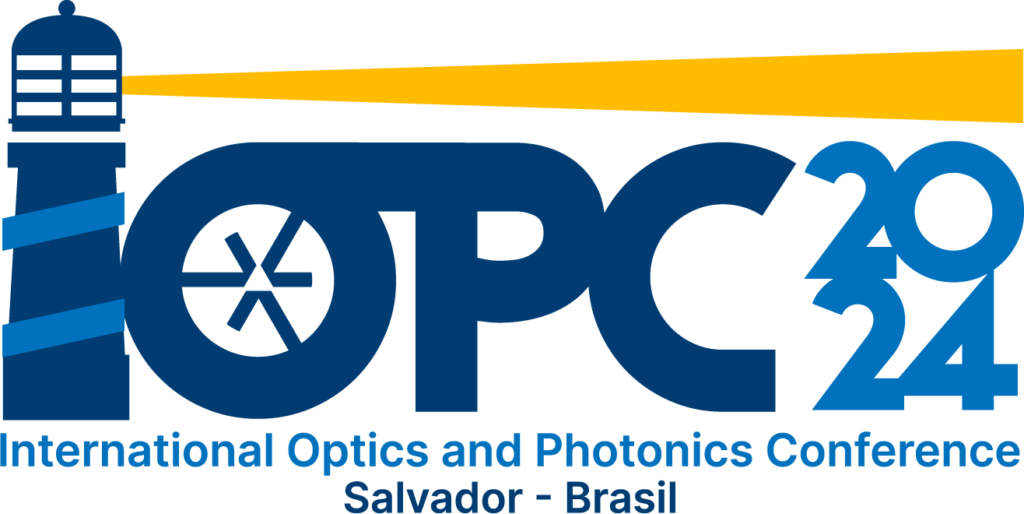
November 11-13th
Mercure Salvador Rio Vermelho
R. da Fonte do Boi, 215 - Rio Vermelho,
Salvador - BA, 41940-360

The Brazilian Optics and Photonics Society (SBFoton) and the IEEE Photonics Society (IPS) announce the organization and realization of the 2024 SBFoton International Optics and Photonics Conference, 2024 SBFoton IOPC. The sixth edition of this successful conference will be held in the city of Salvador, State of Bahia, Brazil, from November 11th to 13th, 2024.
SBFoton IOPC is an annual conference that draws in leading researchers harnessing light, or photons, and control its propagation phenomena for multiple applications and scenarios, thus stimulating scientific exchange among scientists and engineers from industry, research centers and academia.
SBFoton IOPC focuses on a broadband approach to optics & photonics related technologies. It is primarily designed for reporting on the latest findings on: Biophotonics; Integrated Photonics & Optoelectronics; Lasers; Optical Communication; Optics & Instrumentation; and Sensors, Image & Illumination.
promotion


Support
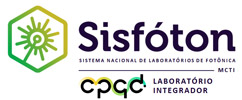

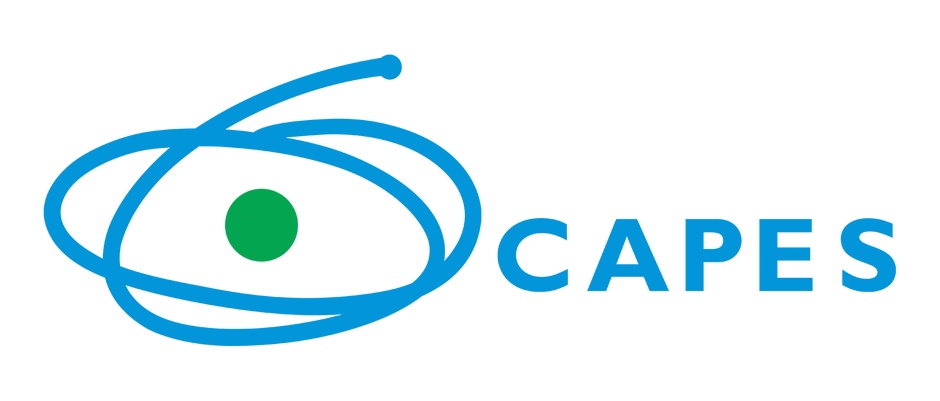
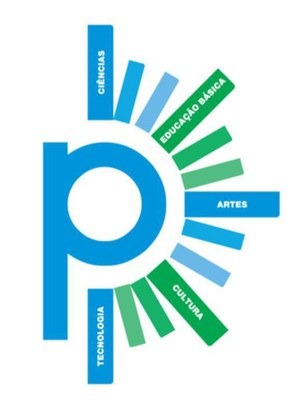
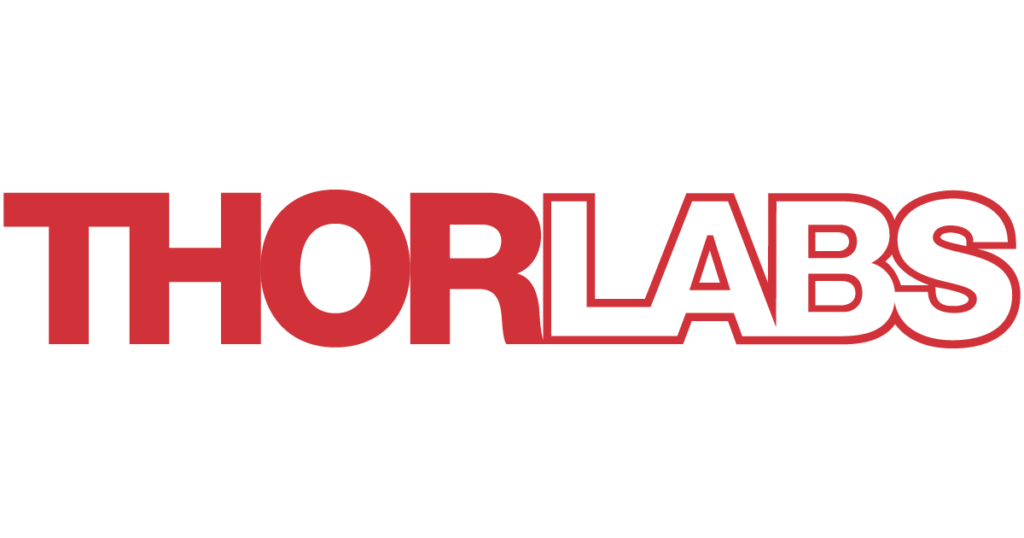


Program
This is a preliminary program, which will be updated frequently
PS: Plenary Session; TS: Technical Session; SPC: Student Paper Competition
Monday, November 11th
09:00-09:30
Auditorium (A)
Opening Ceremony
09:30-12:15
Auditorium (A)
Plenary Session PS-MON
Chair: Hugo Figueroa
| 09:30-10:15 | PS-MON-1: Zhaowei Liu, “Super-resolution imaging enabled by plasmonics and metamaterials” |
| 10:15-10:45 | Coffee Break |
| 10:45-11:30 | PS-MON-2: João Batista Rosolem, “Sisfóton contributions in photonics and future perspectives” |
| 11:30-12:15 | PS-MON-3: Victor Dmitriev, “Metasurfaces: group-theoretical approach” |
12:15-14:00
Lunch Break
14:00-15:30
Auditorium (A)
TS-MON-A1: Lasers 1
Chair: Edison Maldonado
| 14:00-14:30 | TS-MON-A1-1 (invited): Marcelo S. Alencar et al., “Flat Optical Frequency Comb Generation Using Woodward’s Theorem” |
| 14:30-14:45 | TS-MON-A1-2: Bruno Nunes et al., “Decomposition method to speed up optimization loops containing Monte Carlo simulations to estimate radioisotope production” |
| 14:45-15:00 | TS-MON-A1-3: Rodrigo Ferreira da Silva et al., “Evidence a phonon laser triggered by photon avalanche in Nd3+ ions” |
| 15:00-15:15 | TS-MON-A1-4: Felipe Prado et al., “24 mJ Single Pulse Energy from a Nd: YLF/Cr: YAG Laser in a DBMC Configuration” |
| 15:15-15:30 | TS-MON-A1-5: Felipe Prado et al., “The Role of the Student Chapter in Scientific Outreach: An Experience Report in the Field of Optics and Photonics in Brazil” |
14:00 - 15:30
Room B
TS-MON-B1: Biophotonics 1
Chair: Lucia Saito
| 14:00-14:30 | TS-MON-B1-1 (invited): Cicero Cena et al., “FTIR spectroscopy of biofluids for disease diagnosis: Data quality influence on group separation” |
| 14:30-14:45 | TS-MON-B1-2: Julya Tavares et al., “Delayed luminescence tests with algae under Zinc stress” |
| 14:45-15:00 | TS-MON-B1-3: Vinicius Anjos et al., “ATR-FTIR Spectroscopy in the Detection of Amoxicillin” |
| 15:00-15:15 | TS-MON-B1-4: Vinicius Anjos et al., “Antibiotic Monitoring Employing Raman/SERS Spectroscopy” |
| 15:15-15:30 | TS-MON-B1-5: Camila Antunes et al., “Mathematical prediction of singlet oxygen generation through sonoluminescence excitation” |
14:00-15:30
Room C
TS-MON-C1: Optical Communication
Chair: Mônica Rocha
| 14:00-14:30 | TS-MON-C1-1 (invited): Carmelo Bastos-Filho et al., “Hybrid Training for 5G Linearization Systems Based on Machine Learning” |
| 14:30-14:45 | TS-MON-C1-2: Sinei Gonçalves Junior et al., “Design of a temperature sensor based on partially filled hollow-core optical fibers” |
| 14:45-15:00 | TS-MON-C1-3: Renan Carvalho et al., “Exploring the Impact of Topological Features on Ordering Rounting and Spectrum Assignment in Elastic Optical Networks” |
| 15:00-15:15 | TS-MON-C1-4: Matheus Santos et al., “Analysis of Fully-Loaded Conditions in Multiband Elastic Optical Networks Using GSNR” |
| 15:15-15:30 | TS-MON-C1-5: Rafael Vieira et al., “Mathematical Modeling of Distributed Macrobending Loss in Optical Fiber Path Using Differential Geometry” |
15:30-16:00
16:00-17:30
Auditorium (A)
TS-MON-A2: Integrated Photonics and Optoelectronics 1
Chair: João Batista Rosolem
| 16:00-16:30 | TS-MON-A2-1 (invited ): Gilliard N. Malheiros-Silveira, “Optical Power Injection Approaches in Photonic Integrated Circuits” |
| 16:30-16:45 | TS-MON-A2-2: Arthur Clini de Souza et al., “Deep Learning Methodology for Mass Design of Photonic Devices” |
| 16:45-17:00 | TS-MON-A2-3: Maria Carolina Volpato et al., “Analysis 1T’-MoTe2 saturable absorber integrated to a silicon nitride waveguide” |
| 17:00-17:15 | TS-MON-A2-4: Gaston Lozano Calderon et al., “Unveiling the localized surface plasmon-Er3+ coupling in the near-infrared emission at low temperatures” |
| 17:15-17:30 | TS-MON-A2-5: Rafael Silva et al., “A Graphene-based PAM-4 Optical Modulator on a Side-Polished Fiber” |
16:00-17:30
Room B
TS-MON-B2: Biophotonics 2
Chair: Cicero Cena
| 16:00-16:15 | TS-MON-B2-1: Nicolas Melo et al., “Response to the treatment of non-melanoma skin cancer using photodynamic therapy in diabetic mice” |
| 16:15-16:30 | TS-MON-B2-2: Erika Ponce Ayala et al., “Assessment of products generated by photodynamic and sonodynamic action via Liquid Chromatography-Tandem Mass Spectrometry” |
| 16:30-16:45 | TS-MON-B2-3: Karine Gusmão et al., “Red LED radiation as a potential radioprotector using a zebrafish embryo model” |
| 16:45-17:00 | TS-MON-B2-4: Danielle Laskowski et al., “Synthesis of magneto-plasmonic hybrid Au-Fe(oxide) nanoparticles and their use as SERS substrates” |
| 17:00-17:15 | TS-MON-B2-5: Larissa Silva et al., “Evaluating the Influence of Titanium Dioxide Nanoparticle Size on Sunscreen UV Filters” |
| 17:15-17:30 | TS-MON-B2-6: Laís Aguilera et al., “Synthesis and characterization of curcumin-loaded chitosan nanoparticles for photodynamic inactivation” |
16:00-17:30
Room C
TS-MON-C2: Optical Communication 2
Chair: Tiago Sutili
| 16:00-16:30 | TS-MON-C2-1 (invited): Mônica de Lacerda Rocha et al., “A new Brazilian multi-user laboratory for experimental high-speed transmission” |
| 16:30-16:45 | TS-MON-C2-2: Lucas Zischler et al., “Estimating Capacity and SNR Loss Induced by MDG Using ANNs in Optical SDM Transmission” |
| 16:45-17:00 | TS-MON-C2-3: Robson Colares et al., “Demonstration of ϕ-OTDR-based DFOS Assisted by YOLOv8 for Traffic Monitoring in Smart Cities” |
| 17:00-17:15 | TS-MON-C2-4: Mareli Rodigheri et al., “Comparative Analysis of Modal Dispersion in Graded-Index Multimode Fibers” |
| 17:15-17:30 | TS-MON-C2-5: Felipe Tavares et al., “Issues for Using All-Optical Wavelength Converters and Route Segmentation in Optical Networks” |
19:00-22:30
Welcome Cocktail
Tuesday, November 12th
9:15-12:00
Auditorium (A)
Plenary Session PS-TUE
Chair: Vitaly Esquerre
| 09:15-10:00 | PS-TUE-1: Carmen Mas Machuca, “Emerging technologies to upgrade optical core networks” |
| 10:00-10:30 | Coffee Break |
| 10:30-11:15 | PS-TUE-2: Cristina Kurachi, “Strategies to use photonic-based techniques for pigmented tumors” |
| 11:15-12:00 | PS-TUE-3: Rodrigo Vicentini, “Advancing Photonics and Quantum Technologies: Research, Education, and Collaboration with Keysight Technologies” |
12:00-14:00
Lunch Break
14:00-15:30
Auditorium (A)
TS-TUE-A1: Integrated Photonics and Optoelectronics 2
Chair: Gilliard Malheiros Silveira
| 14:00-14:15 | TS-TUE-A1-1: Carlos Henrique Carvalho et al., “Broadband Tunable Metal-Dielectric Color Filters for the visible spectrum” |
| 14:15-14:30 | TS-TUE-A1-2: Jair Carvalho et al., “Ultra-Efficient Modulators based on Chalcogenide and Graphene Materials for AI Hyperscalers” |
| 14:30-14:45 | TS-TUE-A1-3: Wender Daniel et al., “Analysis of the Precision of the Transfer Matrix Method Applied to Optical Coupling Problems” |
| 14:45-15:00 | TS-TUE-A1-4: Abel Apaza Quispe et al., “Optical Properties of SP Microcavities After the Thermal Oxidation Process” |
| 15:00-15:15 | TS-TUE-A1-5: Bernardo Dias da Costa et al., “Chemically Etched Fiber-Waveguide Interface” |
| 15:15-15:30 | TS-TUE-A1-6: Cosme Eustaquio Rubio Mercedes et al., “Low-crosstalk in 2D waveguide crossings by metaheuristic optimization methods” |
14:00-15:30
Room B
TS-TUE-B1: Biophotonics 3
Chair: Martha Ribeiro
| 14:00-14:15 | TS-TUE-B1-1: Letícia Martinelli et al., “Determination of the Attenuation Coefficient by OCT in Cutaneous Melanoma After the Application of Optical Clearing Agents” |
| 14:15-14:30 | TS-TUE-B1-2: Caique Porsch et al., “Development of a Photodiagnostic Method for Seed” |
| 14:30-14:45 | TS-TUE-B1-3: Natasha Mezzacappo et al., “Characterization of protoporphyrin IX in isolated mouse liver mitochondria” |
| 14:45-15:00 | TS-TUE-B1-4: Allan Rodrigues Barboza et al., “Evaluation of the influence of different illuminants on skin color classification using the Individual Typology Angle” |
| 15:00-15:15 | TS-TUE-B1-5: Raffaele Stasi et al., “Infrared Spectroscopy Imaging of Cardiac Atria from Mice Treated with Interleukin-1beta: A Preliminary Clustering Analysis” |
| 15:15-15:30 | TS-TUE-B1-6: Daniella Peres et al., “A deep neural network approach for oral squamous cell carcinoma identification” |
14:00-15:30
Room C
TS-TUE-C1: Sensors, Image and Illumination 1
Chair: José Luis Fabris
| 14:00-14:30 | TS-TUE-C1-1 (invited): João Sakamoto et al., “Development of a fiber optic inertial measurement unit for space applications” |
| 14:30-14:45 | TS-TUE-C1-2: Gabriel de Freitas et al., “Harmonic Minimization Method for Pd Plasmonic Diffraction Grating Design” |
| 14:45-15:00 | TS-TUE-C1-3: Eduardo Souza et al., “Antiresonant polymer optical fibers for strain sensing” |
| 15:00-15:15 | TS-TUE-C1-4: Eduarda Morais et al., “Monte Carlo Analysis of Signal Amplitudes in Fiber Optic Interferometric Sensors” |
| 15:15-15:30 | TS-TUE-C1-5: Thales Castro de Barros et al., “Lead-acid battery electrolyte density sensor using heterocore optical fiber” |
15:30-16:00
16:00-17:45
Auditorium (A)
TS-TUE-A2: Lasers 2
Chair: Cristiano Gallep
| 16:00-16:30 | TS-TUE-A2-1 (invited): Edison P Maldonado et al., “Contributions to the design of laser wakefield acceleration >30 MeV at high repetition rates with parameters obtained by particle-in-cell simulations” |
| 16:30-16:45 | TS-TUE-A2-2: Elbis Cardoso et al., “Analysis of the Nonlinear Refractive Index in a High-Power YDCFL Using the RK4 Method” |
| 16:45-17:00 | TS-TUE-A2-3: Elbis Cardoso et al., “Comparative Analysis of a High-Power YDCFL Operating in Forward and Two-end Pumping Configurations” |
| 17:00-17:15 | TS-TUE-A2-4: Elbis Cardoso et al., “Theoretical Analysis of Nonlinear Polarization in a High-Power YDCFL” |
| 17:15-17:30 | TS-TUE-A2-5: Vitória Brandão et al., “Implementation of an Imaging System in a Spectrometer for Laser Accelerated Electrons” |
| 17:30-17:45 | TS-TUE-A2-6: Lucas Mendes et al., “Theoretical Analysis of Increasing Beam Quality by Adapting Mode Field Radius at Pump-signal Combiner’s signal fiber” |
16:00-17:45
Room B
TS-TUE-B2: Optics and Instrumentation 1
Chair: Iuri Pepe
| 16:00-16:30 | TS-TUE-B2-1 (invited): Valeria da Silva et al., “From Coherent Communications to Quantum Security: Modern Techniques in CV-QKD” |
| 16:30-16:45 | TS-TUE-B2-2: Rodrigo Amorim et al., “Bright Asynchronous Heralded Single-Photon Source Using a-Si: H Waveguide” |
| 16:45-17:00 | TS-TUE-B2-3: Walter Oswaldo Cutipa Flores et al., “Random Convolutional Kernel Transformation and Regression Models for Chlorophyll Estimation in Leaves from Reflection Spectra” |
| 17:00-17:15 | TS-TUE-B2-4: Luca Trinchao et al., “Stability Analysis of Degenerate Optical Parametric Oscillation” |
| 17:15-17:30 | TS-TUE-B2-5: Fábio Simões et al., “Galvanometer-Based 2D Optical Scanner: Trajectory Modeling and Linearization” |
| 17:30-17:45 | TS-TUE-B2-6: Alcenisio Jesus-Silva et al., “Spatial effects of second harmonic generation with non-diffracting fields” |
16:00-17:45
Room C
TS-TUE-C2: Optical Communication 3
Chair: Carmen Mas Machuca
| 16:00-16:30 | TS-TUE-C2-1 (invited): Pedro Freire et al., “State-of-the-Art Neural Network-Based Equalizers for Coherent Optical Communication Systems: Architectures and Complexity” |
| 16:30-16:45 | TS-TUE-C2-2: Fernanda Chaves et al., “On the Complexity of Chromatic Dispersion Compensation based on End-to-End Learning” |
| 16:45-17:00 | TS-TUE-C2-3: Marcionilo da Silva et al., “Prototyping and Validation of Electro-Optical Transmitter for 1.2-Tb/s per Channel Systems” |
| 17:00-17:15 | TS-TUE-C2-4: Rivael Penze et al., “Enhancing Passive Optical Networks using Semiconductor Optical Amplifiers for Expanded Coverage and Capacity” |
| 17:15-17:30 | TS-TUE-C2-5: Marvyn Inga et al., “Enhancing and Evaluating Edge Coupling between Fiber Microlenses and Integrated Waveguides” |
| 17:30-17:45 | TS-TUE-C2-6: Letícia Souza et al., “A Radio- and Power-over-Fiber System using Double-clad Fiber Towards B5G Networks” |
18:00-20:00
20:00-23:00
Wednesday, November 13th
9:15-12:00
Auditorium (A)
Plenary Session PS-WED
Chair: Alexandre Pohl
| 09:15-10:00 | PS-WED-1: Marcelo Davanco, “Nanophotonic interfaces to single quantum emitters” |
| 10:00-10:30 | Coffee Break |
| 10:30-11:15 | PS-WED-2: Débora Marcondes Bastos Pereira Milori, “Laser-induced breakdown spectroscopy: a game changer for agri-food analysis and environmental monitoring” |
| 11:15-12:00 | PS-WED-3: Jesús M. de la Fuente, “Nanoactuators for therapy and diagnosis” |
12:00-14:00
Lunch Break
14:00-15:15
Auditorium (A)
TS-WED-A1: Optics and Instrumentation 2
Chair: Valeria da Silva
| 14:00-14:30 | TS-WED-A1-1 (invited): Iuri Pepe et al., “Optical system for real-time monitoring of the free water content present in diesel” |
| 14:30-14:45 | TS-WED-A1-2: Jessica Dipold et al., “Nd: YVO4 Random Laser pump-controlled” |
| 14:45-15:00 | TS-WED-A1-3: Helga Darezzo et al., “Quantification of Cadmium and Lead in Tomato Fruits: Evaluation of the Potential of the OPC-LIBS Technique” |
| 15:00-15:15 | TS-WED-A1-4: Helga Darezzo et al., “Detection of Escherichia coli in Tomatoes Using Laser-Induced Breakdown Spectroscopy Technique (LIBS)” |
14:00-15:30
Room B
TS-WED-B1: Biophotonics 4
Chair: Daniela Teixeira da Silva
| 14:00-14:15 | TS-WED-B1-1: Júlia Nonato Croce et al., “Investigating photosensitizing properties of methylene blue on perfusate solutions decontamination for organ preservation” |
| 14:15-14:30 | TS-WED-B1-2: Gabriel Jasinevicius et al., “Antimicrobial Effect of Reactive Iodine Species Produced by Photodynamic Therapy Against Streptococcus pneumoniae in a Lung Alveolar Transwell Model” |
| 14:30-14:45 | TS-WED-B1-3: Amanda Gonçalves et al., “iAnG: Species-specific Leishmania DNA Detection via LAMP Coupled with Gold Nanorods Biosensors and Depolarized Dynamic Light Scattering” |
| 14:45-15:00 | TS-WED-B1-4: Cynthia Caires et al., “Efficacy of PCPDTBT Polymer Nanoparticles in Photoinactivating mcr-1 E. coli with White Light” |
| 15:00-15:15 | TS-WED-B1-5: Cynthia Caires et al., “Potential Use of PCPDTBT Conjugated Polymer Nanoparticles Against Superbug mcr1-positive Through Photothermal Therapy” |
| 15:15-15:30 | TS-WED-B1-6: Mayara Pinto et al., “Assessing the Efficacy of Photobiomodulation Therapy and Radioactive Gold Nanoparticle Combination in a Murine Model of Breast Cancer” |
14:00-15:30
Room C
TS-WED-C1: Sensors, Image and Illumination 2
Chair: Jonas Osório
| 14:00-14:15 | TS-WED-C1-1: Lidia Rosa et al., “All-biodegradable agar-core, agar-cladding optical fiber” |
| 14:15-14:30 | TS-WED-C1-2: Marcos Kamizi et al., “Portable Sensing System Based on Optical Fiber Sensors and Smartphone for the Gait Monitoring” |
| 14:30-14:45 | TS-WED-C1-3: Thiago Santos et al., “Fiber Bragg grating sensor design for pressure detection in compressed air pipeline system” |
| 14:45-15:00 | TS-WED-C1-4: Ricardo da Silva et al., “Next-Generation Tunable All-Fiber Mach-Zehnder Interferometers in Hollow Core Fibers” |
| 15:00-15:15 | TS-WED-C1-5: Sergio Celaschi et al., “Effective Luminescent Sensor Element for Monitoring Dissolved Oxygen” |
| 15:15-15:30 | TS-WED-C1-6: Túlio Pedrosa, “Optimizing gold nanoparticles for broadband light heating” |
15:30-16:00
16:00-17:45
Auditorium (A)
TS-WED-A2: Integrated Photonics and Optoelectronics 3
Chair: Victor Dmitriev
| 16:00-16:15 | TS-WED-A2-1: Celio Finardi et al., “Innovative Vertical Coupling Photonic Packaging Using Additive Technology” |
| 16:15-16:30 | TS-WED-A2-2: Juan Zapata et al., “Second Harmonic Generation in bulk ReS2 with hybrid AA-AB stacking” |
| 16:30-16:45 | TS-WED-A2-3: Gabriel dos Santos et al., “Investigation of Photobleaching Dynamics of Functionalized Curcumin in PVC for Antimicrobial Photodynamic Applications” |
| 16:45-17:00 | TS-WED-A2-4: Paloma Pellegrini et al., “Synthesis of pure anatase phase TiO2 films without direct thermal control applied to the fabrication of optical structures” |
16:00-17:45
Room B
TS-WED-B2: Biophotonics 5
Chair: Jesús de la Fuente
| 16:00-16:15 | TS-WED-B2-1: José Tatmatsu-Rocha et al., “Study of antimicrobial efficacy of photodynamic therapy in candida albicans culture medium” |
| 16:15-16:30 | TS-WED-B2-2: Gleice Germano et al., “Rapid identification of breast cancer in different stages using micro-FTIR and supervised machine learning methods” |
| 16:30-16:45 | TS-WED-B2-3: Ismael Sauter et al., “Combined Effects of Optical Therapy and Stem Cells For Tendon Rehabilitation” |
| 16:45-17:00 | TS-WED-B2-4: Fabio Lopes et al., “Migration and Alignment of Fibroblasts: Comparison Between the Effects of the Polarization of Laser and a Non-Laser Device” |
| 17:00-17:15 | TS-WED-B2-5: Abdênego Rodrigues da Silva et al., “Nonthermal Optical Therapy: Implications for Infectious Processes” |
16:00-17:45
Room C
TS-WED-C2: Optical Communication 4
Chair: Arismar Sodre Jr.
| 16:00-16:15 | TS-WED-C2-1: Jonas Osório et al., “Hollow-core fiber-based curvature sensor with high sensitivity and large dynamic range” |
| 16:15-16:30 | TS-WED-C2-2: Otávio Mendonça et al., “Mitigation of nonlinear distortion in single-channel coherent DP-16QAM optical interconnects employing decision tree-based classification” |
| 16:30-16:45 | TS-WED-C2-3: Lucas Cardinal et al., “Machine learning for mitigation of nonlinear intesymbol interference in digital coherent optical communication systems” |
| 16:45-17:00 | TS-WED-C2-4: David Farfán-Guillén et al., “Performance of MIMO Visible Light Communication Under Consideration of Recommended Illumination Levels” |
| 17:00-17:15 | TS-WED-C2-5: David Farfán-Guillén et al., “PMMA-based Light Collector for Enhanced Indoor Visible Light Communication Systems” |
17:30-18:00
INSTRUCTIONS FOR THE REVIEW MANUSCRIPT PREPARATION
Concerning the PDF Review Manuscript:
- Use the IEEE A4-paper template for conferences, with a 3-page limit for regular papers and a 5-page limit for invited papers.
- Remember that SBFoton IOPC adopts a double-blind review process. Therefore, do not mention the authors’ names in the manuscript file, leaving the space blank.
- Avoid creating files without embedded fonts. Papers with missing embedded fonts will generate a warning for the review manuscript, but they will not be accepted as a final manuscript.
- All submitted papers will be passed through a similarity check based on published works.
Concerning the Registration of the Paper on the EDAS System:
- Choose if your paper is regular or invited (invited papers must insert a password);
- Register the paper’s title, at least 2 keywords, and the abstract (the same as the manuscript) with 10 to 100 words. Then, select from 1 to 2 topics that better describe your paper;
- Add the authors using the email or EDAS ID;
- Upload the review manuscript.
Acceptance will be communicated by 30th September, and final versions of accepted papers may be uploaded up to 21st October.
The final versions of the accepted papers will be published in IEEE Xplore, but they are conditioned on registration and presentation at the SBFoton IOPC 2024.
INSTRUCTIONS FOR THE FINAL MANUSCRIPT PREPARATION
The final manuscript must be an IEEE PDF Express compatible file and uploaded to the EDAS platform. The EDAS checks whether the PDF is IEEE Xplore compliant and warns of possible compatibility problems.
The IEEE Xplore-compliant PDF must be generated in the IEEE PDF eXpress site for the SBFoton IOPC 2024. To use this facility, please follow the instructions below.
1 – BEFORE CREATING A PDF
Use the IEEE A4 format template for conferences and a 3-page limit (regular papers) or a 5-page limit (invited papers). Do not forget to include the authors’ names in the final manuscript file and consider the reviewers’ recommendations.
Avoid creating files without embedded fonts. Papers with missing embedded fonts will not be accepted as final manuscripts.
Add the copyright notice to the bottom of the first page of your source document (see the field indicated in the IEEE template). Then, proofread your source document thoroughly to confirm that it will require no revision.
For papers in which the U.S. government employs all authors, the copyright notice is: U.S. Government work not protected by U.S. copyright.
For papers in which all authors are employed by a Crown government (UK, Canada, and Australia), the copyright notice is: 979-8-3503-8817-6/24/$31.00 ©2024 Crown.
For papers in which the European Union employs all authors, the copyright notice is: 979-8-3503-8817-6/24/$31.00 ©2024 European Union.
For all other papers, the copyright notice is: 979-8-3503-8817-6/24/$31.00 ©2024 IEEE.
2 – CREATING YOUR PDF EXPRESS ACCOUNT
Log in to the IEEE PDF eXpress site
First-time users should do the following:
- Select the New Users — Click Here
- Enter the following:
- > 62248X for the Conference ID;
- > Your email address;
- > A password.
- Continue to enter information as prompted. An online confirmation will be displayed, and an email confirmation will be sent to confirm your account setup.
Previous users of PDF eXpress:
You must follow the above steps but provide the same email and password used for previous conferences. Verify that your contact information is valid. Please note that the IEEE PDF eXpress site is only a facility for creating or verifying PDF files. Therefore, after creating the PDF from the IEEE PDF eXpress site, the author needs to upload the PDF file via the EDAS Conference Management System.
3 – UPLOADING YOUR PDF EXPRESS DOCUMENT
Sign the IEEE electronic copyright form (link provided at EDAS), indicate the paper presenter, and upload the final version of your paper up to 21st October at the EDAS Conference Management System following the above instructions.
The final versions of the accepted papers will be published at IEEE Xplore, conditioned on:
- the upload of a final manuscript;
- the signing of the IEEE electronic copyright form;
- the registration and the presentation of the paper at the SBFoton IOPC 2024 (every paper must be associated to a “full” registration).
If you do not want your paper in IEEE Xplore, you must not upload the final manuscript and/or sign the copyright electronic form.
4 – INFORMATION ABOUT ORAL PRESENTATION
Each regular paper has a 15-minute slot (12 minutes for the oral presentation plus 3 minutes for Questions and Answers), and invited papers have a 30-minute slot (25 minutes for the oral presentation plus 5 minutes for Questions and Answers).
STUDENT PAPER COMPETITION
The 2024 SBFoton IOPC Student Paper Competition is organized by SBFoton
and financially supported by the IEEE Photonics Society
Winners
1st Place
Danielle do Rocio Laskowski, “Synthesis of magneto-plasmonic hybrid Au-Fe(oxide) nanoparticles and their use as SERS substrates”
2nd Place
Rodrigo Amorim, “Bright Asynchronous Heralded Single-Photon Source Using a-Si: H Waveguide”
3rd Place
Lidia de Oliveira Rosa, “All-biodegradable agar-core, agar-cladding optical fiber”
4th Place
Vitória Macêdo Costa Brandão, “Implementation of an Imaging System in a Spectrometer for Laser Accelerated Electrons”
5th Place
Bruno Silveira Nunes, “Decomposition method to speed up optimization loops containing Monte Carlo simulations to estimate radioisotope production”
Honourable mentions
Allan Christopher Rodrigues Barboza, “Evaluation of the influence of different illuminants on skin color classification using the Individual Typology Angle”
Daniella Lúmara Peres, “A deep neural network approach for oral squamous cell carcinoma identification”
Eduardo Augusto Victor Souza, “Antiresonant polymer optical fibers for strain sensing”
Gaston Lozano Calderón, “Unveiling the localized surface plasmon-Er3+ coupling in the near-infrared emission at low temperatures”
Maria Carolina França Volpato, “Analysis 1T’-MoTe2 saturable absorber integrated to a silicon nitride waveguide”
Robson Assis Colares, “Demonstration of ϕ-OTDR-based DFOS Assisted by YOLOv8 for Traffic Monitoring in Smart Cities”
Aims
- To provide graduate students attending SBFoton IOPC 2024 with an engaging challenge to embrace;
- To motivate and increase the number of students enrolled in scientific R&D activities related to Optics and Photonics;
- To allow students to sharpen their communication skills;
- To provide feedback to students about their research and presentation from a panel of distinguished judges from research centers, industry, and academia;
- To recognize and reward outstanding graduate student research.
ELIGIBILITY
To register for the competition, each participant must:
- Attend SBFoton IOPC 2024 and be a graduate or undergraduate student at least when the work related to the paper was developed;
- Be the first author of an accepted paper with signed copyright and uploaded final version;
- Present the paper at the conference.
Registration
Online registration to participate in the competition is open until 27th October 2024 and is separate from registration to attend the conference. Each competition entry must be authored by one student only—neither supervisor(s) nor another student(s) are allowed as co-participants.
The submission to the Student Paper Competition should provide the paper conference number (EDAS ID), the student’s name, email, and the university’s name where the competitor carried out the research as a graduate/undergraduate student.
After concluding the Student Paper Competition registration, you should receive a copy of the answers you have submitted in the filled form.
SELECTION PROCESS
The Student Paper Competition is a juried track for the conference. Beyond the EDAS scores received during the peer-review process, each candidate will be reviewed by a board of experts who will evaluate the work based on its overall quality, originality, and relevance to the SBFoton community, as they perceived during the oral presentation in the designated Technical Session.
During the presentation, each candidate will be evaluated based on:
- The quality of work;
- The novelty of the approach;
- The significance of the contribution to the field of Optics and Photonics;
- The clarity of the presentation;
- The self-confidence and knowledge of the subject;
- The organization;
- Time management;
- Creativity.
The score received during the peer-review process prior to the conference will also be taken into account for the final score computation.
ANNOUNCEMENT AND AWARDS
The winners of the Student Paper Competition will be announced as part of the closing ceremony of SBFoton IOPC 2024. The top five students will receive a certificate of achievement from SBFoton and US$ 2,500 from the competition sponsor (IEEE Photonics Society), distributed as follows:
- 1st place: US$ 1,000
- 2nd and 3rd place: US$ 500 each
- 4th and 5th place: US$ 250 each
SBFoton will also offer a certificate of achievement with an Honorable Mention Student Paper Award to the students with high final scores out of the top five.
Student Support
- The student (graduate and undergraduate) must be the first author of an accepted paper and present it at the conference;
- The priority levels for the grant allocation are the follows:
- Students with a minimum of one year of association with SBFoton;
- Students with less than one year of membership ranked according to the date of association;
- If available, other students may be considered for the grant.
IMPORTANT DATES
Paper registration and upload opening
July 1st 2024
Deadline for paper registration
August 26th 2024
Deadline for paper upload (thus completing the submission process)
August 30th 2024
Registrations open
September 23rd 2024
Regular paper acceptance/rejection notification
September 30th 2024
Regular paper final version upload
October 21st 2024
Conference
November 11th to 13th 2024
Plenary Speakers
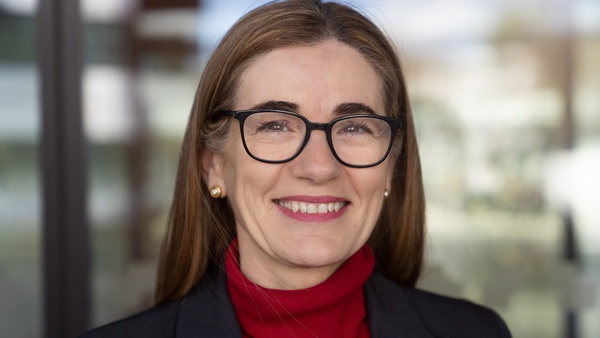
Prof. Carmen Mas Machuca
Professor of Communication Networks at the Department of Electrical Engineering and Information Technology
Universität der Bundeswehr München - Germany
Carmen Mas Machuca received her Master’s degree in communications engineering from the Universitat Politècnica de Catalunya (UPC), Spain in 1996, her PhD degree in engineering from the École Polytechnique Fédérale de Lausanne (EPFL), Switzerland in 2000, and her habilitation from the Technical University of Munich (TUM) in 2017.
Since 2005 and prior to her appointment at UniBw M, Prof. Mas Machuca had been working at the Chair of Communication Networks at TUM. Her research interests cover several topics related to the optimal network planning taking reliability, resources, service requirements, security and/or cost into account. This planning is applied to single and multiple domains or technologies as well as to new solutions (e.g. QKD). Prof. Mas Machuca’s expertise covers both data and control planes. Her research is supported by several national (DFG, BMBF, DAAD) and EU funds (H2020, COST, ITN) like the currently ongoing BMBF funded project FRONT-RUNNER on reliable optical access networks.
The contribution of Prof. Carmen Mas Machuca in the research community is evident in more than 150 scientific publications in international journals and conferences. She is a guest editor for IEEE TNSM and IEEE COMMAG. Furthermore, she is also active in international conferences as chair, TPC co-chair, and TPC member. She has been an IEEE Senior Member since 2012.
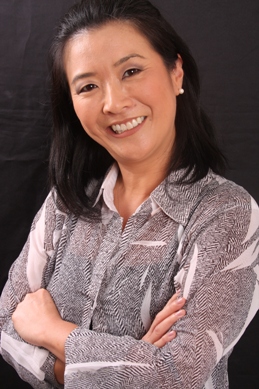
Prof. Cristina Kurachi
Professor at the Physics Institute of São Carlos (IFSC) - University of São Paulo (USP)
She is currently an associate professor at the University of São Paulo and CNPq PQ2 researcher. She holds a degree in Dentistry from the University of São Paulo (1996), a master’s degree in Materials Science and Engineering from the University of São Paulo (2000) and a PhD in Materials Science and Engineering from the University of São Paulo (2005). She has experience in the area of Biophotonics, with an emphasis on the interaction of light with biological systems, optical diagnosis and photodynamic therapy, applied to cancer and infected tissues. The lines of research involve the development of biomedical instrumentation and clinical protocols applying photonic techniques.
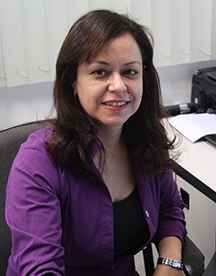
Prof. Débora Marcondes Bastos Pereira Milori
Coordinator of the National Agro-photonics Laboratory (LANAF) - Embrapa, Brazil
She holds a bachelor’s, master’s and doctorate in Physics from the São Carlos Physics Institute – University of São Paulo (USP), specializing in optical techniques and photonics. Since 2001, she has been a researcher at Embrapa Instrumentação, São Carlos/SP, where she is also currently the Deputy Head of Technology Transfer, which covers the innovation and business agenda with private companies. Her research area at Embrapa is optics and photonics applied to agriculture and the environment and since 2003 she has led the CNPq research group “Optics applied to agriculture and the environment”. In 2021, under her coordination, the first National Agro-photonics Laboratory (Lanaf) was approved, supported by the Ministry of Science, Technology and Innovation, within the SISFOTON initiative. It works with the development of methods, sensors and equipment for analyzing soils, plants, fertilizers and foods. In this research line, she highlights her unprecedented work, worldwide, in the development of a method and automated equipment using optical emission spectroscopy with laser-induced plasma – LIBS – for quantifying carbon, nutrients and contaminants in the soil, as well as the development of portable systems for the early diagnosis of plant diseases in the field. The know-how developed on the applications of the LIBS technique for soil analysis generated a spin-off of Lanaf, Agrorobótica.
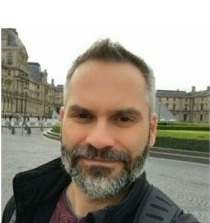
Prof. Jesús M. de la Fuente
Instituto de Nanociencia y Materiales de Aragón, CSIC-Universidad de Zaragoza & CIBER-BBN, Spain
Prof. Jesús Martínez de la Fuente (Barakaldo, 1975) created his own research group (BIONANOSURF Group) at the Univ of Zaragoza in 2007, becoming internationally recognized in nanomaterials and biofunctionalization. The multidisciplinary nature of the group facilitates research and development in numerous areas, including biosensors, gene therapy, magnetism, photochemistry, surface chemistry and molecular metal oxides, among others. He has extensive experience in the synthesis and characterization of novel nanomaterials and their biofunctionalization for the use and development of the next generation of nanobiosensors and nanotherapeutics. In 2009, he founded the spin-off Nanoimmunotech SL. He has also been a pioneer in the application of gold nanoparticles in gene therapy and he has developed a methodology for the use of gold nanoparticles functionalized with carbohydrates (glyconanoparticles) for the study of biological processes (embryogenesis, cancer, inflammation, etc.). He has been PI of research projects with a total budget of more than 6 M€. 75% of this budget is derived from European projects (1 ERANET (Coord); 1 ERC-StG (Coord), 1 ERC-POC (Coord), 7 MSCA-IOF/IEF/IF (Coord), 1 ENMII, 1 TRANSCANII (Coord), 1 FP7, 3 H2020-NMBP); 10% comes from collaborations with companies (CASEN-FLEET, ORPHAN DRUG-RECORDATI, MECWINS, NB, NIT, PROTEOMIKA, BSH, VIRBAC); and the remaining 15% comes from research projects of national calls. In 2010 he was awarded the Aragón Investiga prize “Young Researchers”. In 2013 he was awarded by the Shanghai Administration with the 1000 Talent Plan program to be a visiting professor at the Jiao Tong University of Shanghai. Since 2014, he is a permanent researcher at the Instituto de Nanociencia y Materiales de Aragon-CSIC.
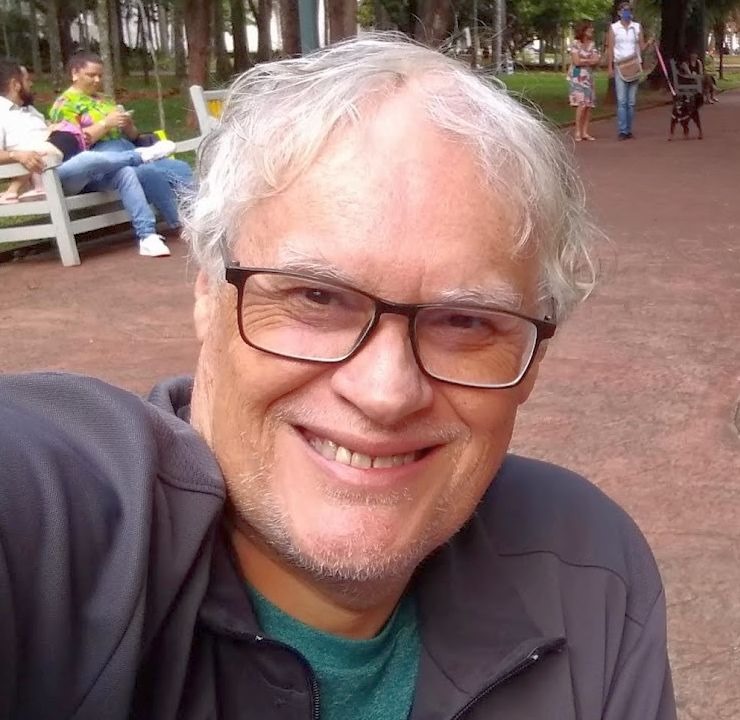
Prof. João Batista Rosolem
Sisfóton-MCTI Integrator Laboratory Coordinator
Plenary:
Sisfóton Contributions in Photonics and Future Perspectives
Joao Batista Rosolem was born in Fartura, SP, Brazil, in 1963. He received the B.S., M.S., and Ph.D. degrees in electric engineering from the University of Sao Paulo, Sao Paulo, Brazil, in 1986, 1990, and 2005, respectively. Since 1990, is a researcher of CPQD Telecommunication Research and Development Center, Campinas, Brazil. He has been involved in the design and characterization of optical devices, optical sensors, WDM optical system and optical amplifiers. Dr. Rosolem is author of over 250 journal and conference papers. He is the holder of 5 U.S. patents, 30 Brasilien patents and more than 13 additional patents are pending. Dr. Rosolem is the coordinator of Sisfóton-MCTI Integrator Laboratory.
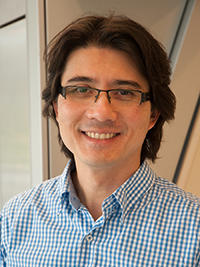
Prof. Marcelo Davanco
Project Leader in the NIST Microsystems and Nanotechnology Division
National Institute of Standards and Technology - USA
Marcelo Davanco is a Project Leader in the NIST Microsystems and Nanotechnology Division. His current research interests are in the design, fabrication and characterization of integrated photonic interfaces to single solid-state quantum light emitters, towards applications in quantum information science and technology.
He has co-authored over 60 journal papers and two book chapters, holds two patents, and has made many contributions to a wide range of research topics, such as photonic crystals and metamaterials, heterogeneous integrated photonic devices, integrated nonlinear optics and cavity optomechanics, and on-chip integrated quantum light emitters.
Marcelo has B.S. and M.S. degrees in Electrical Engineering from the State University of Campinas (UNICAMP), Brazil, and a Ph.D. in Electrical and Computer Engineering from the University of California Santa Barbara in 2006.
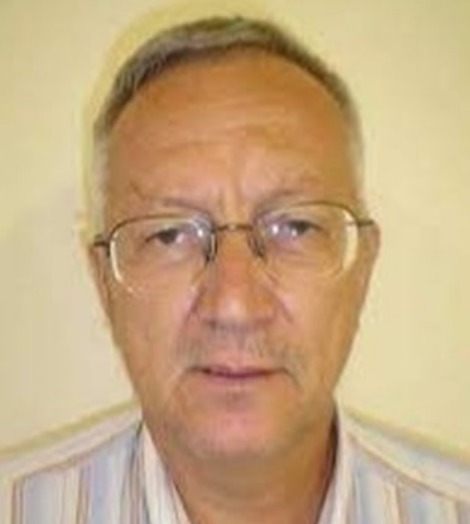
Prof. Victor Dmitriev
Electrical Engineering Graduate Program
Federal University of Pará - Belém, Pará, Brazil
Victor Dmitriev received the B.Eng. degree in high energy systems and the Ph.D. degree in microwave devices from Bauman Technical University, Moscow, Russia, in 1971 and 1977, respectively.,From 1977 until 1994, he taught at Bauman Technical University. In this period, he participated actively in many scientific projects related to radar technology. In 1980, he worked as a Visiting Professor with The Manchester University (UMIST), Manchester, U.K., investigating theoretically and experimentally microwave ferrite devices. Since 1997, he has been a Professor with the State University of Pará (UFPA), Belém, Brazil. He has published over 140 journal articles, 350 conference papers, 40 patents, ten books, and nine book chapters. His research interests include group-theoretical methods in electromagnetic wave theory, nanophotonics, nanoelectronics, metasurfaces, and nanoantennas.

Prof. Zhaowei Liu
Department of Electrical & Computer
Engineering Materials Science and Engineering
Program Center for Magnetic Recording Research
University of California San Diego - USA
Zhaowei Liu is a professor of Electrical and Computer Engineering at UC San Diego. His interdisciplinary research focus includes nanophotonics, plasmonics, nanomaterials and life science. Lui received his Ph.D. in mechanical engineering (MEMS/Nanotechnology) from UCLA in 2006. Before joining the Jacobs School faculty, Liu was a post-doctoral researcher at the NSF Nanoscale Science & Engineering Center (NSEC) in the Mechanical Engineering Department at UC Berkeley.
Professor Zhaowie Liu’s research group is dedicating to a multidisciplinary and interdisciplinary field that bridges researches across disciplines especially in the areas of nanophotonics, plasmonics, nanomaterials and life science. The research topics include a combination of fundamental science exploration, engineering design and optimization, devices fabrication and characterization, and various applications. Liu’s work has been in the emerging field of plasmonics (optics at nanoscale) and metamaterials (artificial materials with unprecedented properties). He has been a principal driver of pioneering research in developing new concepts, devices and techniques, such as far-field superlens, optical hyperlens, tunable plasmonic lens, 3D metamaterials for optical negative refraction, and plasmonic interference lithography. Current research directions include high speed and high spatial resolution bioimaging and sensing, light control at nanoscale using plasmonic structures, development of novel nanofabrication techniques and bio-photonics.
Venue
Mercure Salvador Rio Vermelho
R. da Fonte do Boi, 215 - Rio Vermelho,
Salvador - BA, 41940-360
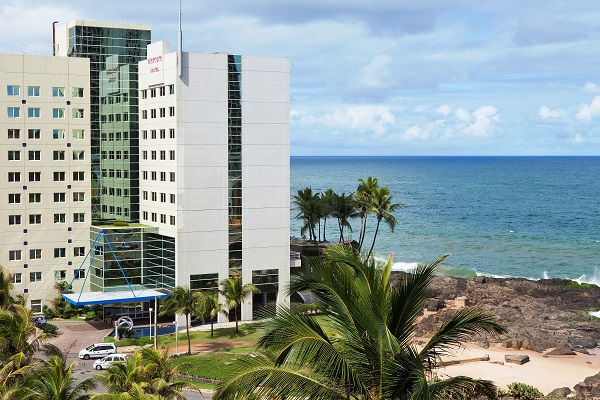
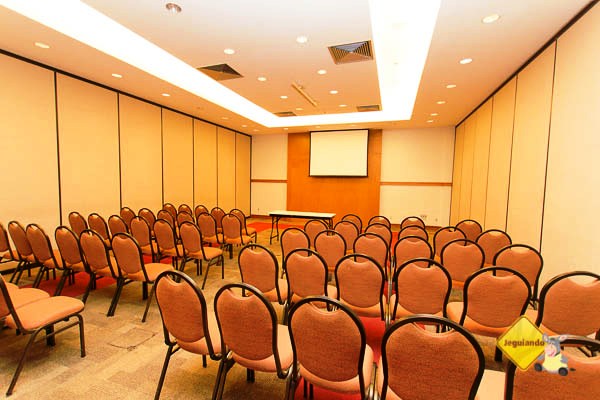
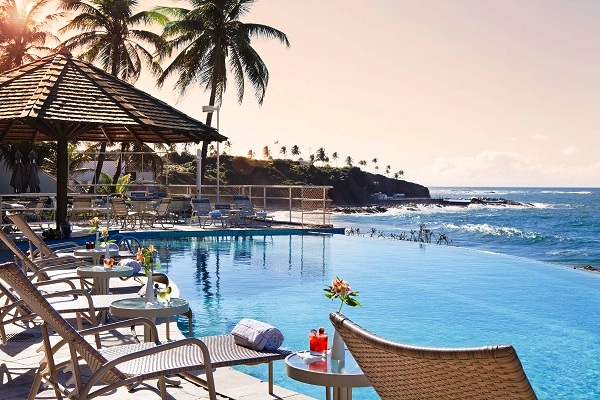
Accomodation
Conference hotel
Mercure Salvador Rio Vermelho
R. da Fonte do Boi, 215 - Rio Vermelho,
Salvador - BA, 41940-360
Phones +55 (71) 3172-9223 / 3172-9224
DAILY FEES
STANDARD SINGLE APARTMENT (city view – 1st to 6th floor)
R$ 430.00 +5% ISS
STANDARD DOUBLE APARTMENT (city view – 1st to 6th floor)
R$ 511.00 +5% ISS
SUPERIOR SINGLE APARTMENT (ocean view – 1st to 6th floor)
R$ 470.00 +5% ISS
SUPERIOR DOUBLE APARTMENT (ocean view – 1st to 6th floor)
R$ 552.00 +5% ISS
OTHER NEARBY HOTELS
Avenida Otávio Mangabeira, Nº 513, Praia da Pituba
Email: reservas@verdemar.com.br
Phones +55 7137-97-4333 /+55 71 99291-393
Daily fees:
- Ocean view apartments (1 or 2 people): R$320,00 + 5%
- Single apatments with city view: R$ 300,00 + 5%
Av. Octávio Mangabeira, nº 197, Pituba, CEP: 41830-050
Email: reservas@daninnexpresssalvador.com.br
Phones +55 71 4042-0251
Daily fees:
- Single apartments: R$200,00 + 5%
- Double apatments: R$ 240,00 + 5%.
- Single apartments: R$ 597,00 + 5%
- Double apatments: R$ 669,00 + 5%.
Rua da Fonte do Boi, 215, Rio Vermelho
Email: h5173-re@accor.com
Phones +55 71 3172-4100
Daily fees:
- Single apartments: R$ 330,00 + 5%
- Double apatments: R$ 395,00 + 5%.
Av. Oceânica, 3033, Ondina, Salvador, BA – CEP 40170-010,
Phones +55 48 3031-6601
Daily fees:
- Single apartments: R$ 123,25 + 5%
- Double apatments: R$ 144,50 + 5%.
Avenida Manoel Dias da Silva, 979 – Pituba
Email: eventos@goldenparksalvador.com.br
Phones +55 71 2201-5622
Daily fees:
- Single apartments: R$ R$250,00 + 5%
- Double apatments: R$ 350,00 + 5%.
- Triple apatments: R$ 450,00 + 5%.
FEES
Fees for Brazilian, Central and other Latin America residents*
| Early Registration until Oct 31st | Standard Registration from Nov 1st | |
|---|---|---|
| Full Registration¹ ⁴ | ||
| SBFoton / IPS / SPIE/ Optica Society Member | R$ 800,00 | R$ 960,00 |
| Non-member | R$ 1.000,00 | R$ 1.200,00 |
| Listener² | ||
| SBFoton / IPS / SPIE/ Optica Society Member | R$ 500,00 | R$ 600,00 |
| Non-member | R$ 700,00 | R$ 840,00 |
| Graduate Student³ | ||
| SBFoton / IPS / SPIE/ Optica Society Member | R$ 300,00 | R$ 360,00 |
| Non-member | R$ 400,00 | R$ 480,00 |
| Undergraduate Student³ | ||
| SBFoton / IPS / SPIE/ Optica Society Member | R$ 150,00 | R$ 180,00 |
| Non-member | R$ 200,00 | R$ 240,00 |
| Other | ||
| One day attendence | R$ 300,00 | R$ 360,00 |
| Confraternization Dinner¹² | R$ 200,00 | R$ 200,00 |
| Extra paper (beyond the two already included in the FULL Registration) | R$ 250,00 | R$ 300,00 |
Fees for international participants of other regions
| Early Registration until Oct 31st | Standard Registration from Nov 1st | |
|---|---|---|
| Full Registration¹ | ||
| SBFoton / IPS / SPIE/ Optica Society Member | USD 400,00 | USD 480,00 |
| Non-member | USD 500,00 | USD 600,00 |
| Listener² | ||
| SBFoton / IPS / SPIE/ Optica Society Member | USD 250,00 | USD 300,00 |
| Non-member | USD 350,00 | USD 420,00 |
| Graduate Student³ | ||
| SBFoton / IPS / SPIE/ Optica Society Member | USD 150,00 | USD 180,00 |
| Non-member | USD 200,00 | USD 240,00 |
| Undergraduate Student³ | ||
| SBFoton / IPS / SPIE/ Optica Society Member | USD 75,00 | USD 90,00 |
| Non-member | USD 100,00 | USD 120,00 |
| Other | ||
| One-Day participation | USD 150,00 | USD 180,00 |
| Confraternization Dinner¹² | USD 40,00 | USD 40,00 |
| Extra paper (beyond the two already included in the FULL Registration) | USD 125,00 | USD 150,00 |
* For registration purposes it is considered Latin and Central American the attendee whose main affiliation is located in Latin and Central America.
¹ The “Full” registration gives the right to attend the conference, to get one ticket for the Confraternization dinner, and to publish up to TWO papers on the IEEE Xplore.
² “Student” and “Undergraduate Student” registrations give the right to attend the full conference.
³ Listener is the participant who does not have an article in the conference and gives the right to attend the full conference and to get one ticket for the Confraternization dinner.
⁴ The full registration is required for those papers presented in the technical sessions.
Photos
2024
Salvador, Bahia
SPONSORSHIP
The International Optics and Photonics Conference, SBFoton IOPC 2024, will be the 6th conference organized by the Brazilian Optics and Photonics Society (SBFoton). The event will be held in person from November 11th to 13th, 2024, in Salvador – BA, under the general coordination of Professors Vitaly Felix Rodriguez Esquerre and Karcius Day Rosário Assis from the Federal University of Bahia. The conference specifically focuses on optics and photonics and their applications in optical communication, lasers, integrated photonics, optics and instrumentation, biophotonics, optical sensors, imaging, and lighting. It is aimed at professionals from companies, government agencies, professors, students, universities, and research centers.
The event will feature presentations by nationally and internationally renowned speakers, as well as regular and invited peer-reviewed papers. Sponsoring companies will also participate, and they can advertise and exhibit their products locally during the event. The conference schedule will include slots for sponsors to promote their messages. Additionally, company logos will be displayed in all conference promotional materials, such as web pages, participant kits, banners, and emails.
With an expected audience of around 120 participants from Brazil and abroad, the event will be an innovative forum for interaction and interface with various stakeholders in the productive sector and in Science, Technology, and Innovation in this rapidly growing field. In addition to debates and presentations on the mentioned topics, there will be sponsored exhibitions, providing them with the opportunity to conduct business, contact clients, showcase new products and technologies, recruit human resources, and promote their brands to a highly qualified audience.
Your company can be a sponsor or exhibitor at SBFoton IOPC 2024 in the following categories:
- GOLD SPONSORSHIP – R$ 20.000,00
- SILVER SPONSORSHIP – R$ 15.000,00
- BRONZE SPONSORSHIP – R$ 10.000,00
For sponsorship inquiries, please contact the organization at the email: sbfoton@sbfoton.org.br
Board Members
General Chairs
Vitaly Felix Rodriguez Esquerre (UFBA / BA)
Karcius Day Rosário Assis (UFBA / BA)
Technical Program Committee Chair
Luiz Henrique Bonani do Nascimento (UFABC / SP)
Topic Leaders
Biophotonics
Patricia Aparecida da Ana (UFABC / SP)
Cícero Cena (UFMS / MS)
Integrated Photonics and Optoelectronics
Gilliard Nardel Malheiros Silveira (UNICAMP / SP)
Christiano José Santiano de Matos (MACKENZIE / SP)
Lasers
Cristiano de Mello Gallep (UNICAMP / SP)
Edison Puig Maldonado (ITA / SP)
Optics and Instrumentation
Valeria Loureiro da Silva (SENAI-CIMATEC / BA)
Marcelo Martins Werneck (UFRJ / RJ)
Optical Communication
Joaquim Ferreira Martins Filho (UFPE / PE)
Andrea Chiuchiarelli (UFMG / MG)
Sensors, Image and Illumination
Márcia Müller (UTFPR / PR)
Jonas Henrique Osório (UFLA / MG)
International Steering Committee
Hugo Enrique Hernandez Figueroa (Unicamp / SP)
Cid Bartolomeu de Aráujo (UFPE / PE)
Brian Vohnsen (University College Dublin / Ireland)
| Alex Dante | Federal University of Rio de Janeiro (UFRJ) / Brazil |
| Alexandre Pohl | Federal University of Technology / Parana (UTFPR) / Brazil |
| Alvaro Damião | Institute of Advanced Studies (IEAv/DCTA) / Brazil |
| Carmelo Bastos-Filho | University of Pernambuco (UPE) / Brazil |
| Carolina Benetti | Federal University of ABC (UFABC) / Brazil |
| Christian CT Dominguez | Paraiba State University (UEPB) / Brazil |
| Claudio C. Motta | University of Sao Paulo (USP) / Brazil |
| Cristiano MB Cordeiro | University of Campinas (UNICAMP) / Brazil |
| Daniel Chaves | University of Pernambuco (UPE) / Brazil |
| Daniel O Carvalho | University of Brasilia (UnB) / Brazil |
| Darli Mello | University of Campinas (UNICAMP) / Brazil |
| Diego Rativa | University of Pernambuco (UPE) / Brazil |
| Edson Porto da Silva | Federal University of Campina Grande (UFCG) / Brazil |
| Emery Lins | Federal University of Pernambuco (UFPE) / Brazil |
| Eric Fagotto | Pontifical Catholic University of Campinas (PUC/Campinas) / Brazil |
| Eric Fujiwara | University of Campinas (UNICAMP) / Brazil |
| Evandro Conforti | University of Campinas (UNICAMP) / Brazil |
| Felipe Rudge Barbosa | University of Campinas (UNICAMP) / Brazil |
| Flávio Moraes | University of Campinas (UNICAMP) / Brazil |
| Francisco Maia | Brazilian Center for Research in Energy and Materials (CNPEM) / Brazil |
| George C Cardoso | University of Sao Paulo (USP) / Brazil |
| Giovanni Beninca de Farias | Meta / USA |
| Helder May Nunes da Silva Oliveira | Federal University of ABC (UFABC) / Brazil |
| Henrique Rosa | Mackenzie Presbyterian University (UPM) / Brazil |
| Herculano Martinho | Federal University of ABC (UFABC) / Brazil |
| Isabel C. S. Carvalho | Pontifical Catholic University of Rio de Janeiro (PUC/Rio) / Brazil |
| Jhonattan Cordoba Ramirez | Federal University of Minas Gerais (UFMG) / Brazil |
| Joaquim Cezar Felipe | University of Sao Paulo (USP) / Brazil |
| Jonas Jakutis | Institute of Advanced Studies (IEAv/DCTA) / Brazil |
| José L Fabris | Federal University of Technology / Parana (UTFPR) / Brazil |
| Karcius Assis | Federal University of Bahia (UFBA) / Brazil |
| Lilia Coronato Courrol | Federal University of São Paulo (UNIFESP) / Brazil |
| Lilian Tan Moriyama | University of Sao Paulo (USP) / Brazil |
| Lino Misoguti | University of Sao Paulo (USP) / Brazil |
| Lucas H Gabrielli | Flexcompute / Brazil |
| Lúcia Akemi Miyazato Saito | Mackenzie Presbyterian University (UPM) / Brazil |
| Luciano Bachmann | University of Sao Paulo (USP) / Brazil |
| Luis Fernando De Avila | University of Campinas (UNICAMP) / Brazil |
| Marcelo Abbade | São Paulo State University (UNESP) / Brazil |
| Marcionilo José da Silva | CPqD – Telecom R&D / Brazil |
| Marco I Alayo | University of Sao Paulo (USP) / Brazil |
| Martha Ribeiro | Nuclear and Energy Research Institute (IPEN) / Brazil |
| Moisés Oliveira dos Santos | Amazonas State University (UEA) / Brazil |
| Mônica de Lacerda Rocha | University of Sao Paulo (USP) / Brazil |
| Natalia Carvalho | University of Calgary / Canada |
| Pablo Gonçalves | Federal University of Goias (UFG) / Brazil |
| Paulo H. D. Ferreira | Federal University of Sao Carlos (UFSCAR) / Brazil |
| Pedro Freire | Aston University / United Kingdon |
| Raul Freitas | Brazilian Synchrotron Light Laboratory (LNLS) / Brazil |
| Regina Celia Allil | Federal University of Rio de Janeiro (UFRJ) / Brazil |
| Ricardo Ataide Lima | University of Pernambuco (UPE) / Brazil |
| Ricardo C Kamikawachi | Federal University of Technology / Parana (UTFPR) / Brazil |
| Ricardo E. Samad | Nuclear and Energy Research Institute (IPEN) / Brazil |
| Sebastião Pratavieira | University of Sao Paulo (USP) / Brazil |
| Silvana Pereira | TU Delft / The Netherlands |
| Silvia Cristina Nunez | Brazil University (Universidade Brasil) / Brazil |
| Theo Pavan | University of Sao Paulo (USP) / Brazil |
| Thiago P. M. Alegre | University of Campinas (UNICAMP) / Brazil |
| Tiago Sutili | CPqD – Telecom R&D / Brazil |
| Vilson R Almeida | Aeronautics Institute of Technology (ITA) / Brazil |
| Vitaly Esquerre | Federal University of Bahia (UFBA) / Brazil |
| Yves-Alain Peter | Polytechnique Montréal / Canada |
Aleksander Paterno | Santa Catarina State University (UFSC) / Brazil |
Alessandra Batista | Brazil University (Universidade Brasil) / Brazil |
Alessandra Lima | University of Sao Paulo (USP) / Brazil |
Alessandro Marcio Hakme Da Silva | Brazil University (Universidade Brasil) / Brazil |
Amilcar Careli Cesar | University of Sao Paulo (USP) / Brazil |
André Xavier | Federal University of Pernambuco (UFPE) / Brazil |
Braian da Silva | Fluminense Federal University (UFF) / Brazil |
Bruno Marangoni | Federal University of Mato Grosso do Sul (UFMS) / Brazil |
Carlos Jacinto da Silva | Federal University of Alagoas (UFAL) / Brazil |
César Dartora | Federal University of Technology / Parana (UTFPR) / Brazil |
Daniel Goncalves | Federal University of Amazonas (UFAM) / Brazil |
Daniela De Fátima Teixeira Da Silva | Nuclear and Energy Research Institute (IPEN) / Brazil |
Fatima Maria Mitsue Yasuoka | University of Sao Paulo (USP) / Brazil |
Flavio Marques | Federal University of Lavras (UFLA) / Brazil |
Helder A. Pereira | Federal University of Campina Grande (UFCG) / Brazil |
Henrique Patriota Alves | Federal Rural University of Pernambuco (UFRPE) / Brazil |
Indayara Bertoldi Martins | Ekinops / France |
Jehan Nascimento | Federal University of Pernambuco (UFPE) / Brazil |
Joao B Rosolem | CPqD – Telecom R&D / Brazil |
Jonathas Siqueira | University of Campinas (UNICAMP) / Brazil |
José Hélio da Cruz Júnior | Federal University of Rio Grande do Norte (UFRN) / Brazil |
José Paulo G. Gonçalves de Oliveira | University of Pernambuco (UPE) / Brazil |
Juliana Ferreira | Universidade do Vale do Paraíba (UNIVAP) / Brazil |
Leonardo Didier Coelho | Federal University of Pernambuco (UFPE) / Brazil |
Luis Abegao | Federal University of Sergipe (UFS) / Brazil |
Manuel S Neves | University of Aveiro / Portugal |
Marcello Magri Amaral | Brazil University (Universidade Brasil) / Brazil |
Marcelo Segatto | Federal University of Espirito Santo (UFES) / Brazil |
Marcio Godoy | Federal University of Sao Carlos (UFSCAR) / Brazil |
Marcos A. R. Franco | Institute of Advanced Studies (IEAv/DCTA) / Brazil |
Marcus Paulo Raele | Nuclear and Energy Research Institute (IPEN) / Brazil |
Maria José Pontes | Federal University of Espirito Santo (UFES) / Brazil |
Marianne S Peixoto e Silva | Federal University of Pernambuco (UFPE) / Brazil |
Marvyn Inga | CPqD – Telecom R&D / Brazil |
Mateus Habermann | Institute of Advanced Studies (IEAv/DCTA) / Brazil |
Murilo A Romero | University of Sao Paulo (USP) / Brazil |
Oberdan Pinheiro | SENAI CIMATEC / Brazil |
Rafael Nobrega | Federal Institute of Minas Gerais (IFMG) / Brazil |
Raul Almeida Júnior | Federal University of Pernambuco (UFPE) / Brazil |
Rivael S Penze | CPqD – Telecom R&D / Brazil |
Roberto Monteiro | SENAI CIMATEC / Brazil |
Romildo Souza | Aeronautics Institute of Technology (ITA) / Brazil |
Saulo Sodré Reis | Federal University of Mato Grosso (UFMT) / Brazil |
Thalita Hellen Nunes Lima | University of Sao Paulo (USP) / Brazil |
Thiago R Raddo | University of Malaga / Spain |
Uilian José Dreyer | Federal University of Technology / Parana (UTFPR) / Brazil |
Contact
Vitaly Felix Rodriguez Esquerre (UFBA / BA)
Karcius Day Rosário Assis (UFBA / BA)
2024 SBFoton IOPC Chairs
